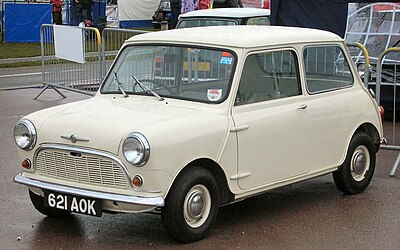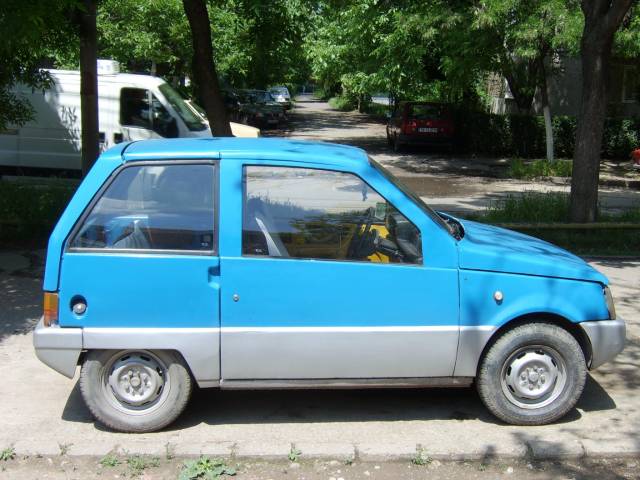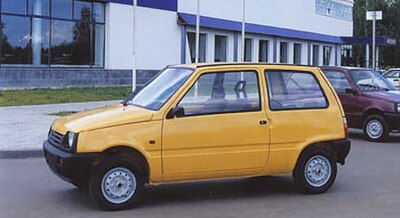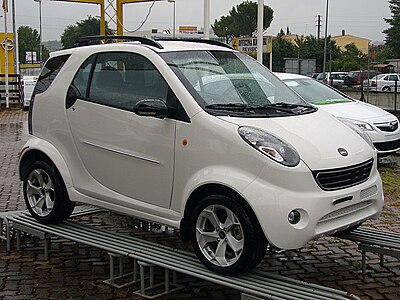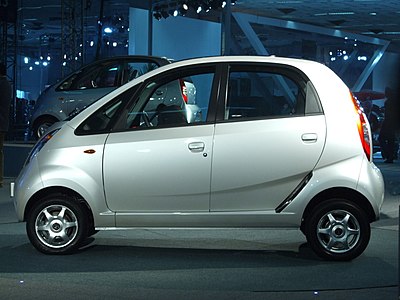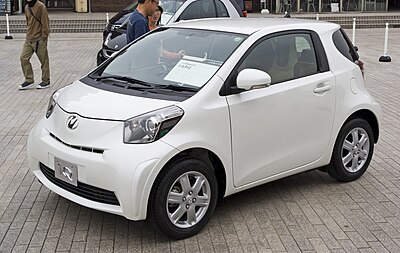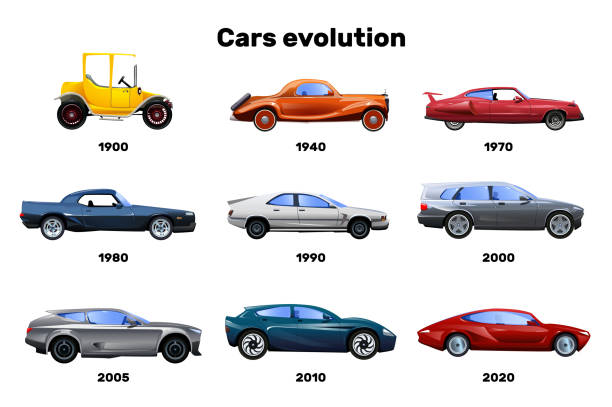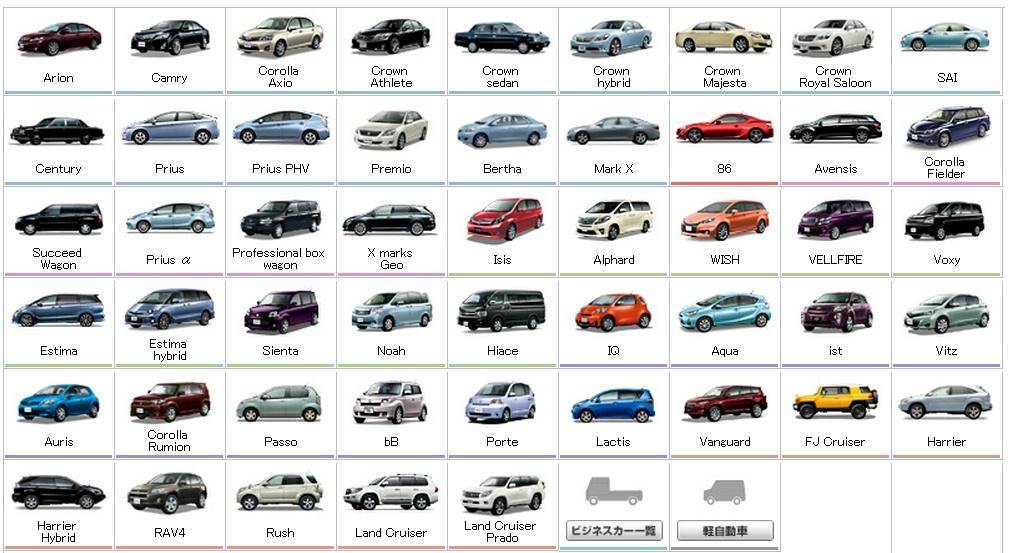I am concerned about car dimensions that grow over years, getting too big for our garages, I was always fascinated by small and basic cars, can such cars be produced in today world? This article shows the smallest cars with 4 seats.
See also: biggest cars
BMW 600
Shortly after World War II, many small cars appeared in the European market. BMW 600, featuring rear engine and frontal access door from 2-seater Isetta bubble car, plus 2 side doors, became a 4-seat car shorter than Fiat 500 and Mini.
Production: 1957-1959, 34,813 units built according Wikipedia.
Engine: 0.6 litres L2 (19.5 PS), top speed 100 kmph.
Dimensions: length 2900 mm, width 1400 mm, height 1375 mm (cube 5.583 m³), wheelbase 1700 mm, weight 515 kg.
Fiat 500
Fiat 500 is the smallest 4-seat car ever produced after World War II (as cube dimensions), although not the shortest.
Production: 1957-1975, 3,893,294 units built according Wikipedia.
Engine: 479 cc, 499 cc, 594 cc.
Dimensions: length 2970 mm, width 1320 mm, height 1320 mm (cube 5.175 m³), wheelbase 1840 mm, weight 500 kg.
Mini
The british Mini was the only 4-seats car under 3.2 meter length that remained in production until end of 20th century… thanks to conservative British population. The new Mini made by BMW in 2001 is 60 cm longer.
Production: 1959-2000, over 5 million units built according Wikipedia.
Engine: 0.85 – 1.3 litres L4.
Dimensions: length 3054 mm, width 1397 mm, height 1346 mm (cube 5.743 m³), wheelbase 2036 mm, weight 617-686 kg.
Dacia Lăstun
Totally unknown by rest of world, Romania produced Lastun, the shortest conventional 4-seat car in the post-WW2 history, even shorter than Fiat 500 (except Isetta’s unconventional styling). Nicolae Ceauşescu attempted to create a very basic car that any Romanian can afford. After 1989 fall of communism, a prototype of a longer and improved Lastun was presented, but project was scrapped and car production was suspended due to poor quality.
My family owned a Lastun during 1990s, it was the only car we could afford in ravaged Romanian economy after 1989 fall of communism.
Production: 1988-1991, 6532 units according Wikipedia, 1985-1992 according other sources.
Engine: 0.5 litres L2 (22.5 PS), top speed 106 kmph.
Dimensions: length 2950 mm, width 1410 mm, height 1352 mm (cube 5.624 m³), wheelbase 1915 mm, weight 590 kg.
Lada Oka (VAZ-1111)
Don’t know if inspired by Romanian Lastun, or by Fiat Panda or Uno, USSR’s Kamaz factory launched a car in similar size and similar design in 1987, sold also under name Lada Oka. Surprisingly it remained in production until 2008. An electric version was also produced in 1989-1998 at special-order basis.
Production: 1987/1988 – 2008/2009, about 700,000 units built according Wikipedia.
Engine: 649 cc B2 (29 PS), 750 cc L2 (33 PS), 996 cc L3 (50 PS).
Dimensions: length 3200 mm, width 1420 mm, height 1400 mm (cube 6.362 m³), wheelbase 2180 mm, weight 645 kg.
Shuanghuan Noble
Shuanghuan Noble is a Chinese car sold in various European and Asian countries, it has generated controversies due to its similar styling to that of the Smart Fortwo, despite that it have front engine and seating for 4 passengers. The rear seats provide enough room for two adults with plenty of space for their knees, although the low roof-line restricts headroom significantly. The rear seats can fold down to reveal a flat loading space, which otherwise is negligible. An electric version is sold under name Wheego Whip.
Production: 2004-2016.
Engine: 1.1 litres L4 (68 PS), top speed 138 kmph.
Dimensions: length 3010 mm, width 1605 mm, height 1600 mm (cube 7.730 m³), wheelbase 2025 mm, weight 875 kg.
Tata Nano
The Indian Tata Nano is not just a small car but also the cheapest car in the world. At initial launch it was only $1,500 USD. A very basic car to keep costs low, the rear engine is accessible only via interior as the car does not have tailgate.
Production: 2008-2018, production stopped due to poor market demand.
Engine: 624 cc L2 (38 PS), top speed 105 kmph.
Dimensions: length 3099 mm, width 1495 mm, height 1652 mm (cube 7.654 m³), wheelbase 2230 mm, weight 600-635 kg.
Toyota iQ
A very big surprise to see a 4-seat car with less than 3 meters in the 21th century. Toyota iQ looks from outside like the 2-seat Smart but it does have 4 seats. Actually 3+1 seats because the seat behind driver do not have space for an adult. The car do not have any cargo space.
Production: 2008-2015.
Engine: 1.0 litres L3 (68 PS), 1.3 litres L4 (98 PS), 1.4 litres diesel L4 (90 PS), top speed 150-170 km/h.
Dimensions: length 2985 mm, width 1680 mm, height 1500 mm (cube 7.522 m³), wheelbase 2000 mm, weight 860 kg.



